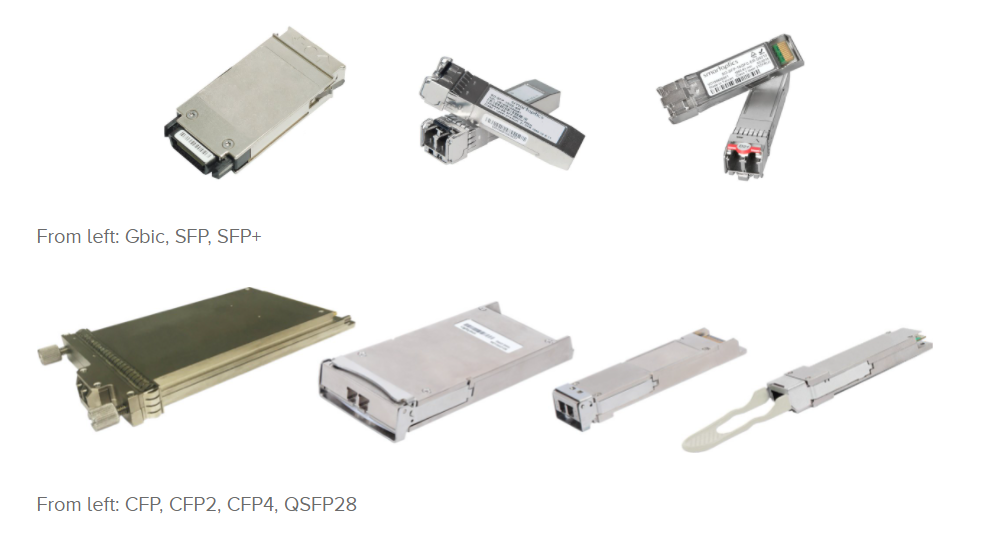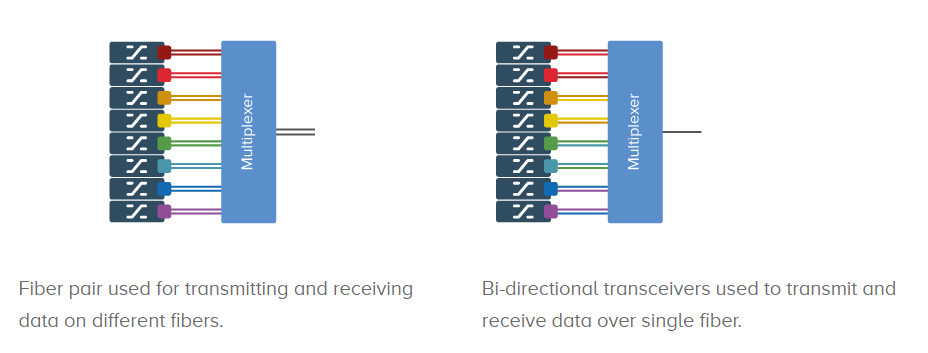In order to transport high levels of data traffic over a network a component called an optical transceiver is required.
Transceivers are lasers that are wavelength specific and convert electrical data signals from data switches into optical signals. Once this process has been performed the data signals can then be transmitted over optical fiber. Each stream of data is transformed into a signal with a unique wavelength. The signals can be 850nm, 1310nm or 1550nm (where nm is nanometer) – these wavelengths are known as wideband; or CWDM or DWDM – these wavelengths are known as narrow band.
Each channel cannot interfere with another channel because of the unique physical properties of light. This is useful because it means that any mix of SAN, WAN, voice or video services are able to be transported at the same time over a single fiver or fiber pair in a WDM system.

Grey (standard)
A standard transceiver, often referred to as a grey transceiver, is a single-channel device.
Since xWDM signals are colored wavelength channels, any signal that is not xWDM is typically referred to as an uncolored, or a grey signal.
Grey transceivers typically have two main applications.
- First, they can be connected directly to a single fiber channel or Ethernet data switch to transport data in the form of light over a dark fiber.
- Second, they can act as an optical interface on the client side of a transponder-based xWDM system (more on transponders in our next installment).
There are four standard transceiver types, each with its own transmission distance:
- SR – Short Range, 850nm
- LR – Long Range, 1310nm
- ER – Extended Range, 1550nm
- ZR – Further Extended Reach, 1550nm
Single fiber (bi-directional)
A bi-directional transceiver uses two independent wavelength channels, one to transmit and one to receive traffic over a single fiber strand. In the same way that our undivided highway has one channel traveling in one direction and another channel traveling in the opposite direction, this is how a bi-directional transceiver works.
Usually it uses channels 1310nm and 1550nm, but for longer distances, two CWDM channels are used, usually 1510nm and 1570nm.

CWDM/DWDM
Together referred to as xWDM transceivers, these are different wavelength patterns – coarse and dense – in a wavelength-division multiplexing (WDM) system. Just as with grey transceivers, they have two fundamental applications.
First, they can connect directly to a data switch to transport an xWDM wavelength over a dark fiber. Usually, an LC patch cable connects the transceiver to a multiplexer so that other xWDM channels can also be sent simultaneously over a dark fiber network. And second, they act as the output (or line) signal from a transponder-based xWDM system.
Transceivers with xWDM functionality
| QSFP-28 | |||
|---|---|---|---|
| DWDM (100GHz) | 80km (20dB) | ||
| SFP+ | |||
| CWDM | 10km (10dB | 40km (14dB) | 70km (23dB) |
| DWDM (100GHz) | 40km (14dB) | 80km (23dB) | |
| DWDM (50GHz) | 40km (14dB) | 80km (23dB) | |
| DWDM (Full C-Band Tunable) | 80km (22dB) | ||
| XFP | |||
| CWDM | 10km (10dB) | 40km (14dB) | 70km (23dB) |
| DWDM (100GHz) | 40km (14dB) | 80km (24dB) | |
| DWDM (50GHz) | 40km (14dB) | 80km (23dB) | |
| DWDM (Full C-Band Tunable) | 40km (14dB) | 80km (22dB) | |
| SFP | |||
| CWDM | 10km (10dB) | 40km (14dB) | 70km (23dB) |
| DWDM (100GHz) | 40km (14dB) | 80km (23dB) | |
| DWDM (50GHz) | 40km (14dB) | 80km (23dB) | |
| DWDM (Full C-Band Tunable) | 80km (22dB) |